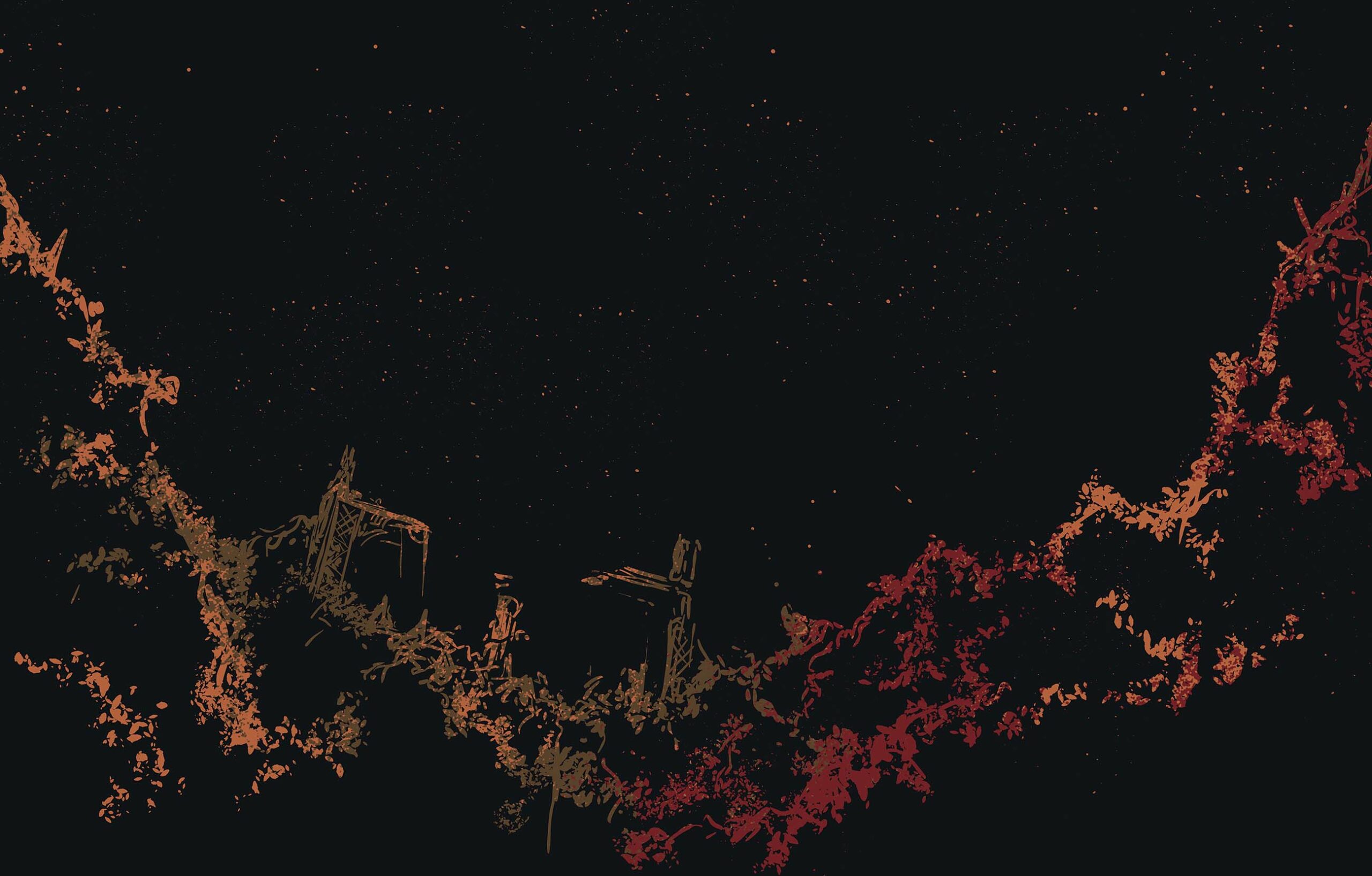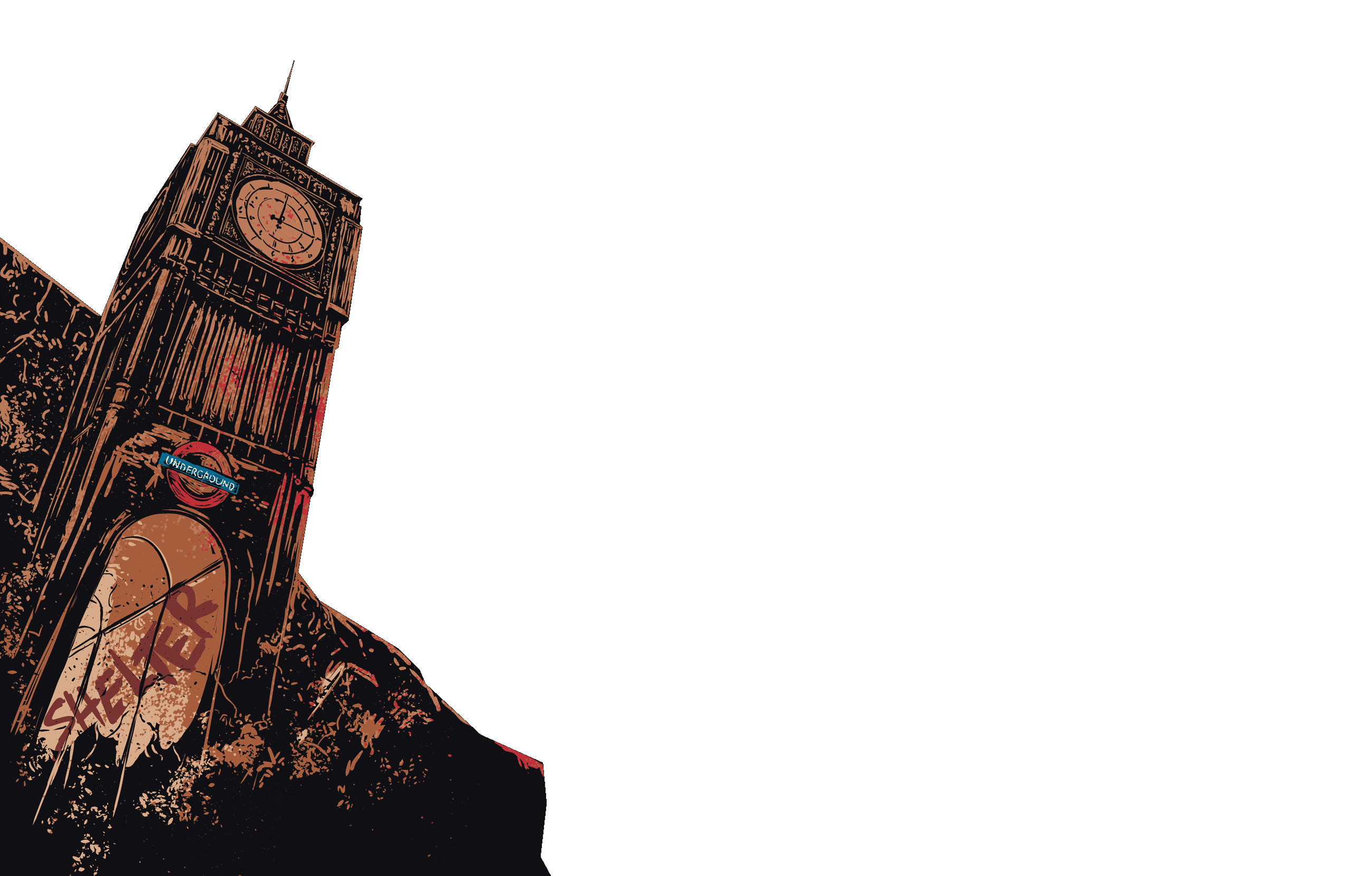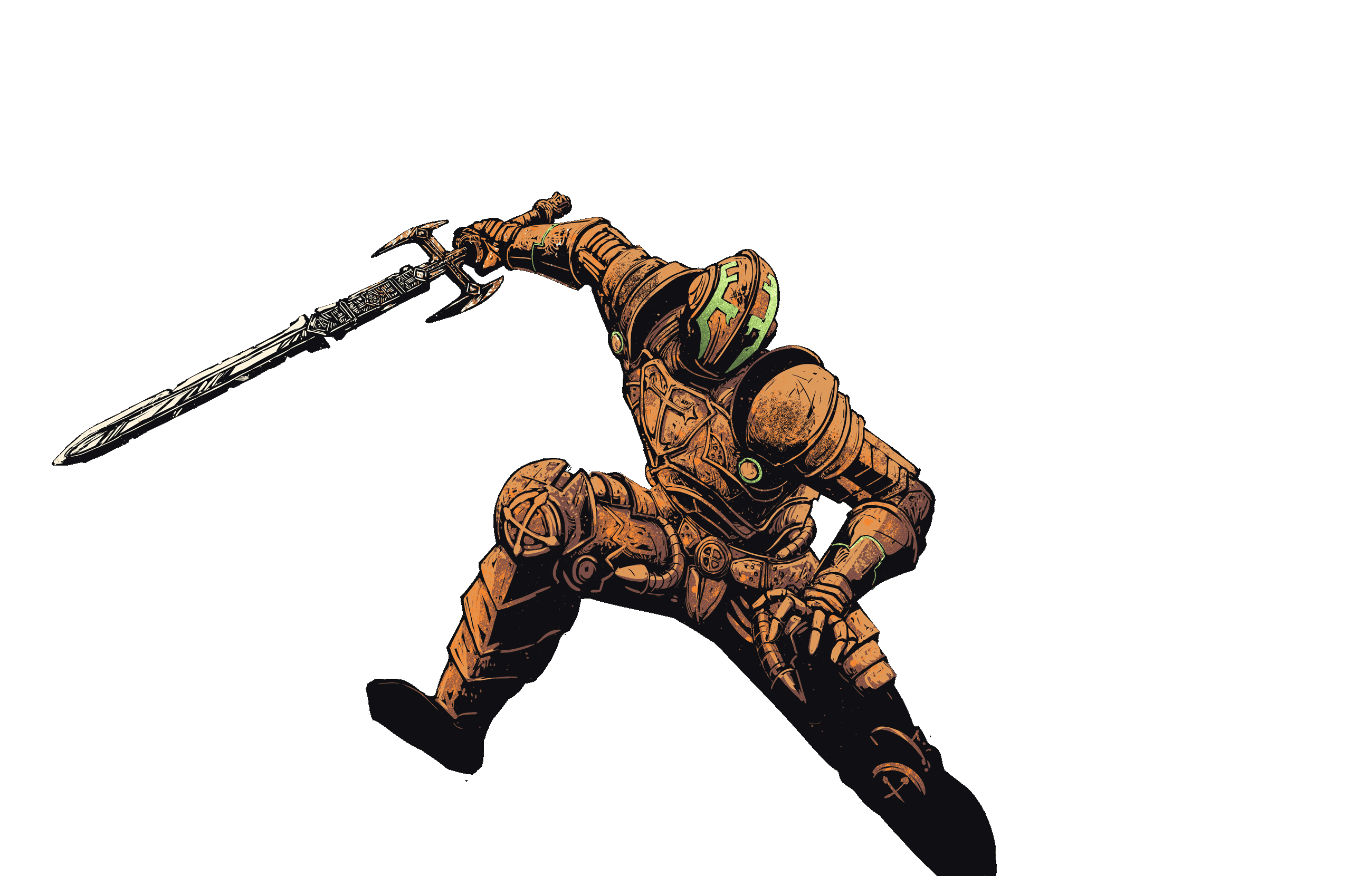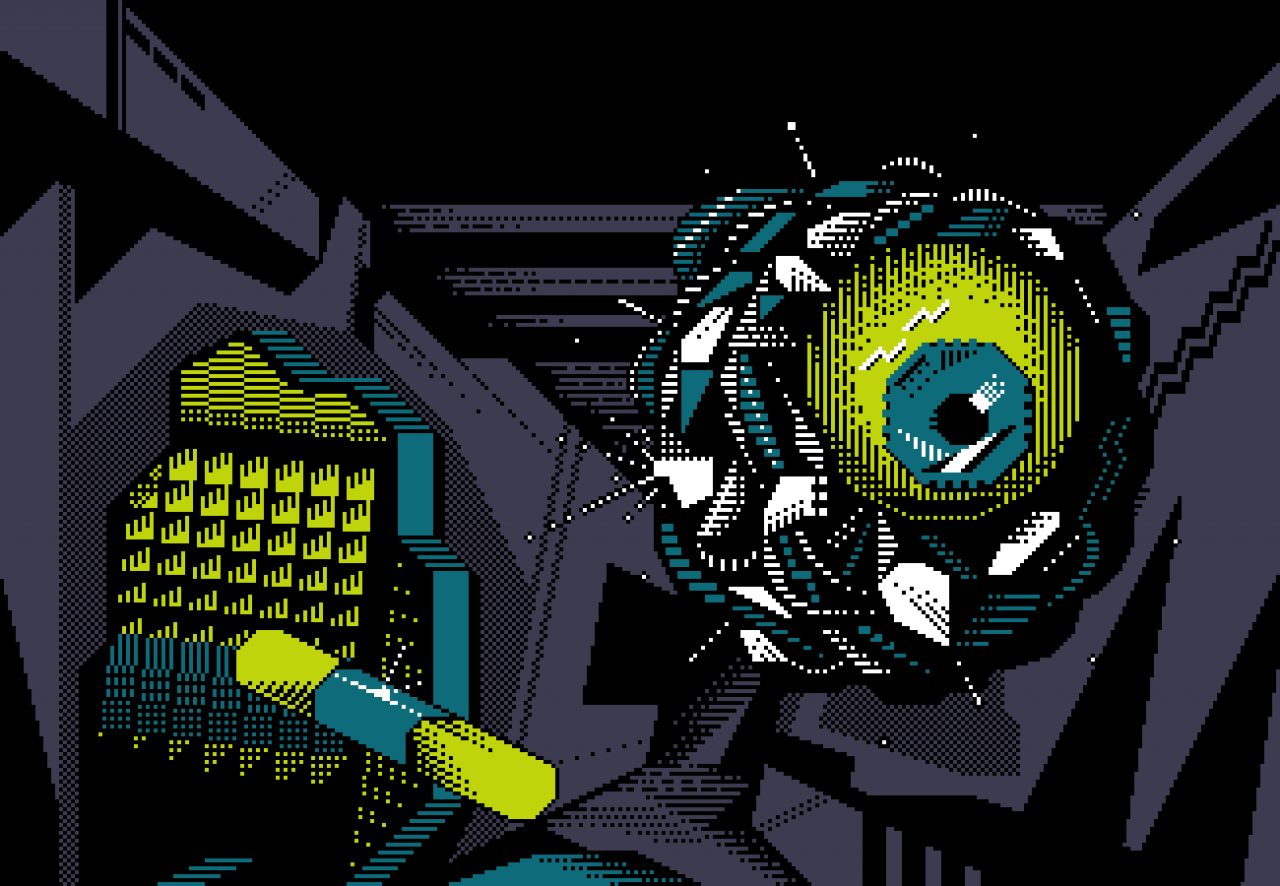The Making of Hellgate: London
How the creators of Diablo got burned but created the loot-shooter
Before Flagship Studios, there was Blizzard North. Originally known as Condor, the Redwood-based studio was acquired in 1997 by Blizzard Entertainment. At the time, Blizzard North was hard at work on the development of the game that would be the cornerstone of everything that came after: Diablo.
At the same time, Blizzard’s soon-to-be parent company Davidson & Associates was in the process of being acquired by Cendant Software, a subsidiary of CUC (Comp-u-Card) International. If the relationship between Blizzard North and its various parent companies sounds complicated, that’s because it was. And it was just the beginning of a meandering road that would eventually lead to Hellgate: London.
Much less complicated, however, were the consequences of Cendant’s scandalous corporate accounting. When it was acquired by Blizzard, many of Blizzard North’s executives were compensated in the form of Cendant stock. As the price of the stock plummeted from $46 to $6, it ripped a hole through the financial security and morale of those who had bought into their new company structure. “It was so bad that white businessmen went to jail,” Condor co-founder David Brevik said. “It had nothing to do with the fact that we were making massive hit games, but that our corporate overlords were corrupt”
In the aftermath of the scandal, Cendant offloaded many of its subsidiaries in an attempt to pay its bills. One of those was Blizzard, which was sold to French publisher Havas in 1998, which, in turn, was subsequently acquired by Vivendi in 2000. Only a few years after that, the word on the street was that Blizzard might be on the market yet again.
This rapid string of mergers, acquisitions and corporate chaos led to growing turmoil within bothsing Blizzard North and Blizzard Entertainment. At the time, Brevik felt like the people above him were mismanaging the talent they had. From his perspective: “We’re making hit after hit after hit and we’re not getting compensated for it.”
During this period, Brevik – one of Blizzard North’s three co-founders – shared his concerns with his allies at Blizzard South (their nickname for the sibling-studio-slash-publisher) and the two cabals formed a united front. Although they had their differences, the pair held many of the same fears. If some wealthy publisher wanted to buy Blizzard for its franchises and fire the people who had made that IP valuable in the first place, there would be nothing they could do about it. “We were freaking out about what could happen and we wanted to be part of that process,” he said. Eventually, they approached their latest set of corporate overlords with an ultimatum.
We were freaking out about what could happen and we wanted to be part of that process,” he said. Eventually, they approached their latest set of corporate overlords with an ultimatum.
“We’re going to resign unless we get something here,” recalled another of Blizzard North’s co-founders Erich Schaefer. This hardball tactic had worked for Blizzard’s leadership in the past. It had gotten them a royalty-sharing program from Cendant, and had been enough to strengthen the terms of that arrangement when Vivendi later acquired the company. This time, however, it backfired.
In June 2003, Vivendi accepted the resignations of David Brevik, Erich Schaefer and Max Schaefer. All three of Condor’s co-founders were out, as was Blizzard North vice president Bill Roper. The latter was originally a producer at Blizzard Entertainment during the development of the first Diablo but joined Blizzard North during the development of the sequel and stuck by Brevik and the Schaefer brothers all the way to the bitter end. Regardless It was as surprising an outcome to them as it was to the rest of the gaming world. After all, they had just made not one but two of the biggest hits in the history of PC gaming – Diablo and Diablo II. That said, after years of being worn down by issues resulting from Blizzard’s size and convoluted corporate ownership, the idea of starting over had a certain appeal to it.
In the aftermath of this unexpected turn, a third of Blizzard North’s staff were laid off. To make things worse, a number of other senior members left – either in solidarity or on the unspoken promise of future work with Brevik and the Schaefers. This exodus left the studio a shadow of its former self and Blizzard North would shutter its doors for good only a few years later. “All the management and top people at Blizzard North left within a day. Some of them stuck around for a couple of months, but the majority of people left day-one,” Brevik recounted.
In the immediate aftermath of their break-up with the rest of Blizzard Entertainment, he and the other co-founders called a meeting to discuss their options. “We were just hanging out at a restaurant and [Hellgate: London] grew out of that,” Erich Schaefer said. The core of the idea was simple. Translate the addictive loot-driven gameplay from Diablo’s iconic isometric perspective to a first-person one. At the time, the first-person shooter genre was fast approaching its fever pitch.
While titles like DOOM and Wolfenstein had always been standouts in the gaming space, the audiences of the early 2000s embraced the first-person shooter through franchises such as Battlefield, Medal of Honor and Call of Duty. Console audiences were even able to join in on the fun through streamlined shooters like Halo. The logic was Diablo plus Quake equals fun and hopefully dollar signs for those who made it. “That idea stuck from the very beginning. Maybe it wasn’t the first day like I remember it, but it was the first idea we discussed and we just built on that,” Schaefer said. A few days later, Brevik and Schaefer regrouped with the rest of those who had walked out of Blizzard North and pitched them this new idea. Though the project remained unnamed for now, there was a clarity to this pitch that was exactly what an uncertain team needed at the time.
In its final years under Brevik and Schaefer’s management, Blizzard North had struggled to unify around a project that wasn’t just another Diablo game. Hellgate: London was just similar enough to what they had done before that they felt confident they could deliver on its potential, but different enough to excite and galvanise the development team. “We talked about it and people were on board that afternoon,” Schaefer said.
Guided by that shared sense of purpose, Brevik, Max & Erich Schaefer and Bill Roper founded a new enterprise under the name Flagship Studios – a name unanimously voted on by the founders. During its time under the Blizzard banner, Blizzard’s North’s leadership had grown from three people – Brevik plus Max and Erich Schaefer – to include Bill Roper and Kenneth Williams. With Flagship, this fellowship grew again.
Peter Hu, Phil Shenk, David Glenn and Tyler Thompson had left Blizzard North in solidarity with Brevik and the Schaefers, and were rewarded for that loyalty with a seat at the table of the group’s next venture. Erich Schaefer said that the money required to start up the company was divided between them. “Of the nine of us, we had to make some kind of arrangements for two of them. The rest of us took no salary. We worked primarily out of Tyler Thompson’s basement for six months or a year while we got the company going and funded and stuff.”
We worked primarily out of Tyler Thompson’s basement for six months or a year while we got the company going and funded and stuff.
The lucrative legacy of Diablo loomed large, and Flagship quickly found itself with a plethora of suitors. EA even flew the team up to their headquarters on a private jet to hear them out. Although it was still early days for the game that would become Hellgate: London, the team had already moved well past Brevik’s one-sentence summary of the project. It now had a name for a start. There was just one small problem.
In a similar turn of events to Blizzard’s brief attempt at rebranding as Chaos Studios, someone already owned the video game rights to the name Hellgate. As Schaefer explained, “It turned out there was a game company in Australia that had owned the name Hellgate.” Auran Games, the developer behind Dark Reign and Trainz, was that company.
“We called them up and they weren’t using it. They had moved on to a different game, but they still had the rights and stuff.” The Flagship founders asked if they could use the name instead. After a bit of back–and–forth, a bargain was struck. Flagship would send over a few key designers to help out the Brisbane-based team for a week and the Hellgate name would be cleared for use.
“So [I], Peter Hu and Tyler Thompson all flew down to Brisbane and stayed with them for a week and helped work on their game in exchange for the Hellgate name. It was a lot of fun,” Erich Schaefer said. Well, for them at least. According to Schaefer, “The designer and the key guys on that game did not want to hear our opinion. It was super uncomfortable, but who cares.”
At this point, Flagship had an idea of what they wanted to call the game, what its artistic influences were and how they wanted to push the random level-generation technology they had built for Diablo even further. A lot of Hellgate: London’s more distinct design choices feel like echoes of ideas that bounced around Blizzard North when they were brainstorming for the Diablo III that never was. Both Hellgate’s MMO-like hubs, which acted as a sanctuary between dungeons, and the division of the game’s roster of classes into factions were tweaks to the action RPG formula that had been, at the very least, discussed at Blizzard North.
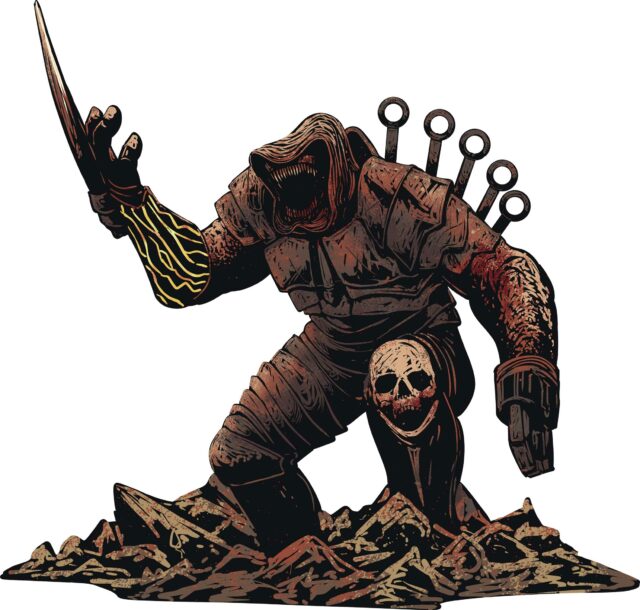
However, the Blizzard North version of factions & hero classes was more MOBA-like, inspired by Warcraft custom maps of the time. “The gameplay was going to be more about you leading on the battlefield,” Schaefer explained, “there’d be other units that would be attacking a map and you would be a hero who could semi-direct those guys or try to help them out, but they would clash with another faction’s units.”
This reframing of Diablo’s core gameplay loop was thought to be a fix to the fundamental problem of PVP that existed in previous entries. Specifically, the idea that it could only really be fun for the winning side. “Instead, let’s get a whole bunch of troops on your side and on their side, and you can slaughter their troops, and they can slaughter yours and everybody feels strong, like a winner.”
As for the classes themselves, Schaefer remembers that at least three of Hellgate’s six playable classes were present in its earliest incarnations. Right from the beginning, “there was a melee character, a shooter character and a summoner character.” You don’t have to squint very hard to see how Diablo’s Paladin and Necromancer classes formed the basis for Hellgate: London’s Templar and Cabalist. “It was just to emulate gameplay from Diablo that we knew we liked and wanted to riff on,” he explained. By comparison, the shooter-heavy gameplay of the Hunter faction was the one that took the team furthest into unknown territory.
As for the change in location, Brevik said that the game’s setting of modern-day London was set in stone from the first pitch. “We wanted to be less American. We wanted to be more global. We thought that, combined with the old-ness of a city like London, would play better towards the plot.” To better realise that goal, a few members of the leadership even made a visit to the United Kingdom to conduct research. In retrospect, Erich Schaefer jokes that this sojourn was probably concocted to fill time while the game’s engine was being built. “They went and took a bunch of photos, especially of the [London] Underground because you’re not allowed to take photos in the [London] Underground. They had to surreptitiously carry cameras down in their waist and all,” he recalled.
While this was happening, the other co-founders were either all-hands-on-deck creating “a whole new engine for the game and all the technology”, or pitching it to publishers. And despite EA’s lavish courting of the Flagship founders, the company ended up signing with Namco. According to Brevik, the executives in charge of Namco’s US division at the time had their eye on building a rival to Blizzard’s Battle.net service. Flagship wanted a publisher for their first title. Namco wanted a cornerstone for an expansive PC gaming portfolio. On paper, it was a perfect partnership for both parties.
Unfortunately, just six months later, the relationship between the two began to sour. After Namco and Bandai merged, the executives responsible for courting Flagship were no longer with the company. Flagships’ publisher wasn’t planning to renege on the contract it had signed, but it was no longer interested in taking the big swing at PC gaming that it had promised. The original arrangement, where Namco was going to handle the back-end infrastructure around the game, was null and void.
Brevik said that this reversal raised a lot of serious and immediate concerns about the game they intended to make. Flagship had planned to rely on Namco for account management, patching, server farms; all the things that go with making a back-end cluster for an online game. Now they would have to find another way of doing so. “We didn’t raise enough money to do that, so we had to make another company and hire people and come up with a pitch to make an online Battle.net style company,” he said.
We didn’t raise enough money to do that, so we had to make another company and hire people and come up with a pitch to make an online Battle.net style company.
This resulted in the creation of a subsidiary company named Ping0. Although necessary, this new venture sapped some critical engineering talent from the Flagship team. However, it also brought Flagship closer with its second publisher – HanbitSoft – who agreed to help fund Ping0. Brevik and the founders had worked with HanbitSoft during their time at Blizzard, so they seemed to be a natural ally when it came to distributing Hellgate: London in Asia-Pacific markets. That same logic led them to tag in another Blizzard-adjacent publisher, The9, to release the game in China.
In retrospect, Erich Schaefer believes the decisions that led to this convoluted publishing arrangement planted the seeds of the company’s downfall. Flagship’s co-founders may have spent more time looking at the money and potential profits than whether a given publisher had the makings of a good partner. “Everyone had different desires and different financial interests and that’s one of the major reasons this whole thing didn’t work out,” he said. Later, when the game’s development ran into trouble, it would also create something of a prisoner’s dilemma. Each publisher had a stake in Flagship’s success, but nobody wanted to be the one to put in money where the others wouldn’t. “If we could have focused on a partner and a business model, it would have been a whole lot easier,” Schaefer said.
Those choppy waters wouldn’t arrive for a while though. Looking back, Erich Schaefer remains positive about the early years of working at Flagship. “The first few years were really good. We had a lot of freedom. We had a nice office. Things were going great, so I think that I remember very fondly those times,” he said.
After the relatively subdued first twelve months of Hellgate: London’s five-year development cycle, things began to move quickly. “As soon as we had an engine and funding, we started to spool up real fast,” he said. Among his biggest concerns during this early period of Hellgate’s development were the design considerations that the shift from Diablo’s isometric perspective to a first-person one would mean for level design.
“What kind of 3D level is fun to explore? What are the sizes? How far do you want to see corridors and the scale of tunnels? Those kinds of things are what we had to figure out and it was all a lot of fun,” he said. “We knew what we had to do. We had some ideas but they changed so radically. Once you get a guy in the area, you’d [sic] realise that the London Underground tubes are very small for a shooter. You’ve got tunnel vision and really low ceilings so it doesn’t feel right at all.”
This jump from 2D to 3D also created many other technical hurdles for the team, especially when it came to making the lighting tech play nice with the level of random level generation in the mix. “Trying to get the lighting to work across all of this stuff without pre-baking the lighting [was difficult] because we couldn’t pre-bake the lighting, because it was randomly put together in different ways. Making all that work was a big technical challenge,” he said.
Even today, this is not a trivial problem to solve. Typically, a game renders a scene, bakes the lighting and then loads it into the game. The algorithmic nature of the levels in Hellgate: London complicated this process. “There was no engine that could do that in runtime so we had to build that engine,” Flagship co-founder Bill Roper said.
Erich Schaefer came up with a lot of crazy ideas for the game during this discovery process, many of which ended up in Hellgate: London. One of the key ones was that each weapon would essentially act as its own skill. In Diablo II, your character skills were predetermined by the class you chose during character creation. With Hellgate, it would depend as much on your arsenal as it would your origins.
In Dungeons & Dragons or Diablo, magical weapons are allowed to have all sorts of unique effects. In comparison, shooters like Unreal and Wolfenstein tended to be more grounded in the physics of real-world firearms. Schaefer’s idea was to combine the two. “The most extreme examples are a gun that shoots a swarm of bees or that kind of magnetic arc gun that will bring monsters to you.” I was literally like ‘I am going to design 100 damn different weapons for this game’ and everyone was like ‘okay, go ahead’, so that actually happened.
I was literally like ‘I am going to design 100 damn different weapons for this game’ and everyone was like ‘okay, go ahead’, so that actually happened.
It’s easy to draw comparisons between this and the absurdly large, exotic arsenals available to players in modern looter-shooters. Their system was essentially an extrapolation of the gem-socketing that the team had introduced in Diablo II, but Erich Schaefer insists that it was a smart evolution of the concept. “Weapon components [in Hellgate: London] are a lot more like what you see in Destiny and Borderlands than what you see in Diablo,” he said.
By 2005, Hellgate: London was starting to come together. According to Schaefer, the team were “halfway in, and it was looking pretty good.” Buoyed by growing confidence in the project they were working on, Flagship decided to make a splashy debut at E3. Back in its heyday, the show was one of the biggest events on the gaming industry’s calendar.
With a standing reservation at the Los Angeles Convention Centre, E3 brought together developers and publishers looking to show off their wares, investors and journalists looking for the next big thing and retailers looking to stock their shelves. “The game was cool, it was playable and we had such good luck back in the Blizzard days, bringing our games [at] an early stage to these shows and so that’s what we did for this game,” Schafer explained.
Schaefer said that the initial E3 reveal of Hellgate managed to score some big crowds and even a few kind words from their former colleagues. “We got big crowds and everyone liked it. I remember a couple of the guys from Blizzard that we used to work with from South coming up to me after that E3 saying ‘Man, you guys are killing it. I wish we could do the stuff you guys are doing,’” he said.
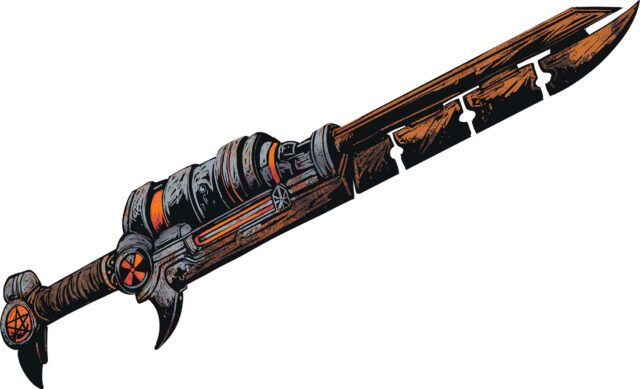
The reception to the reveal of Hellgate: London was a largely positive one that garnered plenty of praise from a games press eager to see what would come next from the creators of Diablo. Flagship came away from the show with a handful of awards from outlets like G-Star, 1up, RPGFan and the Game Critics Awards. “Considering the game’s very modular design, which will let you hunt down desired items to mix, match, and swap in any number of different combinations, Hellgate: London could very well become the next addiction for obsessive Diablo players,” GameSpot’s Andrew Park wrote at the time.
A big element of this showcase was Hellgate: London’s first cinematic teaser trailer. Even today, it’s a stunning tone piece that effectively embodies the fantasy that Flagship was trying to realise with Hellgate: London. A camera follows a horde of monsters down the winding tunnels of the London Underground before arriving at an armoured warrior with a futuristic-looking rifle. Another warrior – this one female – seamlessly dances between the creatures using a pair of submachine guns and a sword to slay one foe after another. “Some people still remember that as the big thing about the game,” Schaefer said.
In addition to appearing at E3, Hellgate: London also made more than a few appearances in print media. “At the time, it was unusual for new IP to make the cover of PC Gamer, but Flagship Studios’ pedigree made it a no-brainer,“ ex-PC Gamer editor Chuck Osborne said. “From a newsstand perspective, the fact that Hellgate: London was the first post-Blizzard game from (some of) the creators of Diablo was the selling point of the story and the cover.”
“Long story short, Diablo sold magazines, especially at PC Gamer during an era when the Diablo franchise was primarily a PC phenomenon. For example, because of how print magazines are displayed on newsstands, the cover line on the left side of a magazine cover and the top line above the masthead are two of its most valuable areas of real estate. You’ll notice that we put ‘From the creators of Diablo… ‘ or ‘From the makers of Diablo…’ in both these spots. If we could have fit the word ‘Diablo’ on the cover a couple more times, we probably would have!”
Looking back, Erich Schaefer worries that this charm offensive may have backfired on them in the long run. “We got a ton of attention and magazine covers and press. I think we got out over our skis on this stuff. People had too high expectations based on this stuff. There was a lot of anticipation and a lot of people started really turning into huge fans way before we had anything.”
For all this anticipation, there was one aspect of Hellgate: London that remained contentious among gamers: its unique approach to subscription fees. “We wanted to make a new style of subscription game that wasn’t an MMO but would be a living product with ongoing content and things like that,” Brevik said. Nothing was stopping you from playing through Hellgate: London alone, and if you wanted to play online with your friends it wouldn’t cost you a cent more. However, if you wanted access to new post-launch content then you’d need to sign up for a monthly subscription.
These ‘Elite’ subscribers also got access to some other perks, including priority in server queues, a larger in-game stash, as well as additional modes and characters slots among other things. The studio even offered a lifetime subscription for early adopters. This business model was so controversial it garnered a lashing from the Penny Arcade webcomic. “It was an idea a little ahead of its time and maybe we didn’t deliver it in the best way we could have. We were definitely made fun of for it, and it was a big strike against us but we wanted to make sure that we could have ongoing content and have it pay for itself,” Brevik said.
It was an idea a little ahead of its time and maybe we didn’t deliver it in the best way we could have.
“In the end,” he admitted, “it was not a great decision. New business models freak people out and this one was pretty expensive, so we got a lot of backlash for it.” Would Hellgate’s unique approach to subscription gaming be received differently now? Brevik thinks so. There are a few key differences between Hellgate’s Elite Subscription and something like Fortnite’s Battle Pass, but there are also a lot of similarities.
Chuck Osborne agreed. “Hellgate: London’s multiplayer fees would definitely be treated differently now because tiered subscription models have been normalised. They’re not beloved by players, but accepted,” he said. “Back in 2007, no one was doing this,” Bill Roper said. As he puts it, the path not taken might have seen Hellgate: London embrace microtransactions instead. However, this business model proved even more bewildering to Flagship’s various investors and publishers. Roper recollects that microtransactions were so new at the time that Flagships’ partners, especially in the US, didn’t even know how to model revenue for it. While Hellgate wouldn’t end up launching with microtransactions in it, the developer’s interest in the business model would end up having a huge impact on another title that it had been developing.
During Hellgate: London’s development, Brevik and some other Flagship founders became enamoured with a game called Fate. Designed and developed by Travis Baldree in less than a year, the lean action RPG took the hack-and-slash gameplay of Diablo and augmented it with the open-ended randomness of games like Nethack. Brevik was so impressed that he approached Baldree with an offer to join Flagship and work on Hellgate. While the initial interview went well enough, the offer itself would involve some pretty big changes.
Baldree and his partner had just had their first kid and moving to San Francisco from Washington meant moving from somewhere that didn’t have a state income tax to one that did. The money involved wasn’t especially great either. In the end, he turned down this chance to join the Hellgate team. Though disappointed, Brevik was sympathetic. He came back with an alternative offer a few months later. He wanted Baldree to head up development on the studio’s second project, at a new Seattle branch they created just for him. Not long after that, the development of Mythos began. “At that time, it didn’t have that name. It was called Tugboat,” Baldree said.
As Brevik puts it, Mythos was envisioned as a way to offset some of the risks presented by Hellgate: London. The idea was that it could be a smaller “Diablo-like or Diablo-lite” project that would allow the company to get its tech tested before the bigger game launched. “We can get the engine out there and see how that goes and make sure we’ve got all of our tech solved,” Brevik said.
Baldree describes his role on Mythos as a canary in the mineshaft. He was hired to use the Hellgate codebase, specifically the multiplayer, and test out the infrastructure with a free game in advance of Hellgate’s launch. “The goal for the game was not to make any money. It was just to test the network tech,” he said. However, partway through development, these goalposts shifted. Mythos would no longer be a small side-bet, but a major release for the studio. Instead, Baldree explained, “The goal was that it would be free-to-play and support itself via microtransactions.”
According to Schaefer, the rapid growth was a natural response to the enthusiasm for Mythos within the company. “This was when the hype for Hellgate was building. All was good, everything was rosy, and we had a lot of money. And so our thinking was just [that] this Mythos [game] is looking fun, everyone’s liking it, let’s pour some extra money into that thing too.”
To meet these new expectations, Baldree began hiring additional staff. Throughout its development, Mythos had a team of up to 15 people. In contrast, Flagship’s main development team numbered around ten times that at its peak. Despite that additional manpower, Roper, Brevik and Schaefer all describe the lead-up to the launch of Hellgate as extremely stressful. “We were crunching. We were still trying to finish the content. It was a stressful time. Not as bad as Diablo II but still a stressful time,” Brevik said
We were crunching. We were still trying to finish the content. It was a stressful time. Not as bad as Diablo II but still a stressful time.
Looking back, Erich Schaefer began to sense the project might be in real trouble around two months before the game’s release. “The game was very buggy and it wasn’t being fixed. We weren’t getting the bug list pulled down. We’ve got 2000 bugs in this thing and you want to release with 500 or whatever, but we were not getting it down.”
As a founding member of Flagship, Schaefer was also privy to the company’s finances. After Namco left them in the lurch and prompted the creation of Ping0, Flagship’s search for a new co-publisher eventually led to Electronic Arts signing on in late 2006. That solved one problem, but there were still plenty of others that demanded attention. Hellgate: London wasn’t finished, nor was Mythos. Time was running out and Flagship’s plan of making sure their tech worked before the big day had gone off the rails as the scope of its side-project had grown.
On the approach to release, Hellgate: London’s box art became increasingly crowded. Take a glance at the finished product and you’ll find no less than ten different brands gracing its cover. This was a byproduct of the many deals that Flagship had made to help extend Hellgate’s development pipeline just that little bit further. At the time, Microsoft was looking to revamp its presence in the PC gaming market. That ambition had been an opportunity for Flagship, who took advantage of the initiative and the financial support that came with it. Bill Roper suggested they tried, “Everything from being one of the first games on Games for Windows, we had integrated voice-over IP support, we had special video streaming that we did internally, we were specifically designed to play better on Intel, blah, blah, blah. Those were all just ways for us to get a little bit more money in with those deals to pour into the product to extend our runway.”
Unfortunately, the extra money that the Microsoft partnership paid out came at an unexpected cost. As the release date approached, Erich Schaefer said that Microsoft’s team began to reach out with increasingly strange requirements and requests. As per the terms of the partnership, Flagship wouldn’t be able to release on Windows if they didn’t comply. “It was this bizarrely restrictive thing that we were screwed by. So we had to move our best engineering muscle on to fixing these critical Microsoft things that were installer-oriented. They weren’t even bugs, but we were ordered to conform by Microsoft.”
Hellgate: London hit shelves on October the 31st, 2007. Flagship and EA had embraced the marketing potential of a Halloween launch for the game, but Bill Roper jokingly admits in retrospect that it probably would have been better for everyone involved if it “could have been a Valentine’s Day-thing or an ‘Ides of March’ thing. It came out, to be candid, when we ran out of money.”
Despite that, Hellgate: London’s reviews are more positive than you would expect given its infamous reputation. Chuck Osborne might have been one of the first journalists to play Hellgate: London, but he was not one of the first to review it. “At the time, PC Gamer had a general policy that anyone who wrote a cover preview about a game didn’t review it. My memory is fuzzy on the circumstances, since I was probably also playing other games for review when Hellgate came out, but I seem to recall that its launch bugs discouraged me from investing too much time into it.”

Like many others, he saw the technical state of Hellgate’s launch as one of its biggest shortcomings. “Blizzard games were known for being very polished, and while Hellgate: London wasn’t a Blizzard game, I think gamers were expecting that same level of polish from a developer founded by former Blizzard employees,” Osborne said.
On a personal level, Roper said that the biggest thing that the studio missed during QA was the pacing of the game. “It was not as varied in some ways, which is a pretty strange thing to say for a game that is algorithmically generated. What tended to happen was that people fairly early in the experience of going through the game had basically seen everything.” Brevik also wished that they had more variety in the game, noting that “some of the underground tunnel stuff is not really as diverse as I would like it to be. I don’t feel like we got to iterate on some of the bosses as I would have liked to.”
While Flagship managed to deliver most of the game they wanted to make in the four to five years they had to make it, a little bit of additional time in the oven could have gone a long way. Many of the late-game quests in Hellgate: London were only added in the weeks before launch. There was barely enough time to get everything in the game, let alone make it good. “Though we finished all the content we wanted, I don’t think we polished it to the degree I would have liked to have polished it,” Brevik said.
Though disappointed with the critical reception to the game, those at Flagship likely found some solace in the fact that the launch of Hellgate: London wasn’t intended to be the end of the journey. The spiritual successor to Diablo had been pitched as what would now be referred to as a live-service game. It was a game that was built to get better over time, at least on paper. In practice, Hellgate’s multi-pronged publishing arrangement quickly tied up the vital resources that could have powered any form of comeback.
“We’re spending the next couple months putting out major technical fires, trying to get new content ready for people and make changes, but Asia wanted different new content and different changes than America did,” Erich Schaefer explained. At this point, “We’re almost out of money and whoever we’re going to make a deal with is going to determine how we’re going to make new content.”
In another world, it’s easy to imagine that the launch of Hellgate: London in the Chinese market might have brought Flagship the extra time it needed. By the end of 2007, the game was out in most regions but remained unreleased in China. According to Erich Schaefer, the story they got from The9 was that the Chinese government wasn’t going to let them release the game due to the gore and violence in it.
At the time, it wasn’t uncommon for Western developers to make concessions for the Chinese market to accommodate the cultural and political sensitivities of the region. For instance, Blizzard changed the appearance of World of Warcraft’s Forsaken to get it approved for sale in the region. Though this account isn’t in itself unbelievable, Erich didn’t buy it. “Really, they had already gotten the inkling that it wasn’t performing that well and that they were going to owe a lot of money,” he said.
Really, they had already gotten the inkling that it wasn’t performing that well and that they were going to owe a lot of money.
In some ways, it was the worst thing that could happen to Flagship at this exact moment. The9 weren’t officially ditching the game, but they weren’t going to pay Flagship any more money until Hellgate: London was released in China – which wasn’t going to happen. If they had cut ties, Flagship could have shopped around for a new publisher. Instead, they had nothing to fall back on right at the moment when they desperately needed something.
Schaefer doesn’t feel good about this turn of events, but he does understand it. “In the defence of these horrible companies who were pretty predatory and all, the game was already out in the US and Korea and there were problems. They were obviously thinking that [they] were paying too much for this game. I’m not blaming those guys for keeping their companies alive.”
One of the many deals that Roper had signed in the lead-up to launch even gave them a bit of financial breathing room that they could use to kickstart the live-service gaming experience that Hellgate: London had the potential to become. Or at least that was the idea. “We had planned and secured funding for the next year for the team and then all of a sudden the rug was pulled out from under us,” Brevik said. According to several sources a key investor was able to escape a contract with Flagship following the game’s lukewarm reception, one which would have bought the team much-needed runway to improve Hellgate.
This all happened in December 2007, two months after launch. While the rest of Flagship was working away on patches that addressed Hellgate: London’s buggy release, or winding up on new content intended to attract paying subscribers, Brevik, Roper and the Schaefers had to scramble like never before. “We hired people to go shop us around. We tried desperately to find somebody that would fund it,” Brevik said.
Unfortunately, Flagship wasn’t seen as quite a tempting investment in the wake of Hellgate’s underwhelming launch. There would be no private jets this time around. Flagship tried everything, including putting up the Mythos and Hellgate: London IP as collateral for a short-term loan to buy them a little more time. Brevik described the final days of the studio as brutal. By this point, the founders were funding the company out of their pocket. With 150 staff, the burn rate was in the region of $100,000 per month.
Travis Baldree and the Mythos team were mostly insulated from these negotiations, with a few exceptions. Shortly after the Mythos IP had been put up as collateral for a short-term loan, it became off-limits for the team. “We were not going to be shipping Mythos anymore. We were going to have to remake the game with different assets into a not-Mythos, while still keeping the technical underpinning because [HanbitSoft] didn’t have the code, they just had the IP.”
Baldree himself ended up becoming contingent in one of the deals that could have saved Flagship. According to him, the investor involved “wanted our project to continue and to invest in a free-to-play isometric ARPG because the new thing could potentially be something that hadn’t already shipped.”
With only days before Flagship would be unable to make payroll, Baldree found out that he would be expected to sign a three-year ‘non-compete clause’ for the deal to go through, without knowing any details of the deal. For someone originally hired as the canary in the coal mine, it was an impossible situation. “I’m not a stakeholder in the company, my salary is not that great and I had theoretical hours to come to a decision and if I didn’t take it everyone would lose their job.”
Baldree went back and asked for his non-compete clause to be decoupled from the deal but this simple ask brought with it days of back-and-forth. During this time, Flagship had been served an eviction notice on its offices over failure to pay its lease. “Everybody was just out of time and the folks that were investing did not have any urgency,” he said.
Everybody was just out of time and the folks that were investing did not have any urgency.
They had even received a visit from the would-be investor that touched on everything except whether those in the meeting would still have jobs on the other side of the proposed deal. “It was a really awful position to be in,” he said. Ultimately, Baldree said no. The alternative just didn’t make sense to him. “I’m not going to sign away my life for three years to work with people I don’t know, for a deal I don’t know anything about, and a company that I don’t own any part of,” he said.
The Hellgate: London IP would live and die several more times over the subsequent decades, but this was the end of the road for the studio that had brought it into the world. While few traces of Flagship remain nowadays, reminders of Hellgate: London are all around for those who know where to look.
Contemporary looter-shooters like Borderlands, Destiny, Remnant, The Division and Outriders all bear some resemblance to the 3D-action RPG formula that Flagship attempted to articulate. The collective critical and commercial success of these Hellgate-likes suggests that the audience was out there, Flagship just didn’t quite connect with it. “I think those guys got to learn lessons from Hellgate. A lot of them. But they also had a lot of other lessons and a lot of other things. They made these games work where we didn’t,” Schaefer said. Looking back, he confesses to some amount of arrogance when it came to the shooter half of Hellgate. “When we were making a shooter, we didn’t really break down how shooters play [or] how shooters work.”
There was a time when the idea of taking the addictive action of a game like Diablo into the unknown was a novel and uncertain proposal. Hellgate: London might not have delivered what it could have been, but it was attempting to deliver the right things.
Later, when Destiny first hit shelves, Bill Roper spoke to people on the team involved with Bungie’s looter shooter. He wasn’t surprised to find that some of them had played Hellgate: London.“You have to take that as a big compliment. You and the team worked and you built a thing and you put it out there and even though it wasn’t ultimately successful for a host of reasons, the ideas that were there have lasted and gone on and inspired others,” he said.
Hellgate: London was the herald of a new genre but it cost the creators of Diablo dearly.

